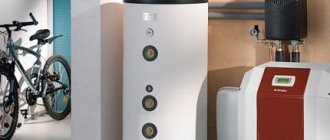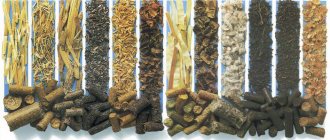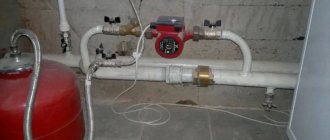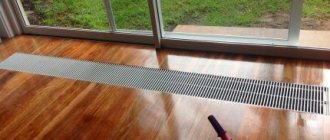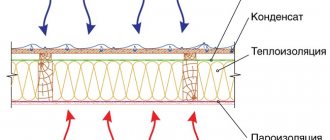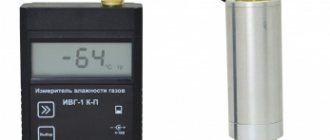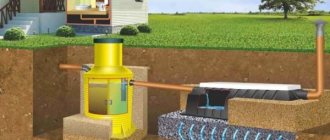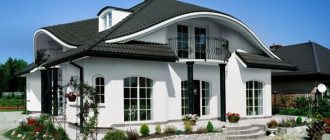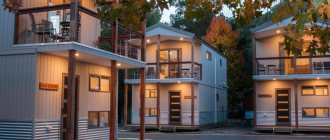In the last decade, solar energy as an alternative energy source has been increasingly used for heating and providing hot water to buildings. The main reason is the desire to replace traditional fuel with affordable, environmentally friendly and renewable energy resources.
The conversion of solar energy into thermal energy occurs in solar systems - the design and principle of operation of the module determines the specifics of its application. In this material we will look at the types of solar collectors and the principles of their operation, and also talk about popular models of solar modules.
Distribution in Russia
Solar energy is becoming increasingly widespread in different countries and on different continents. Russia is no exception to this trend. The reason for its wider distribution in recent years is:
- Development of new technologies, which reduced the cost of equipment;
- People's desire to have an independent source of energy;
- Clean energy production (“green energy”);
- Renewable energy source.
The southern regions of our country - the Caucasus republics, Krasnodar and Stavropol territories, the southern regions of Siberia and the Far East - have potential for the development of solar energy. Regions differ in insolation during the day and time of year, so for different regions the flux of solar radiation in summer is:
As of the beginning of 2022, the capacity of operating solar power plants in Russia is 0.03% of the power plant capacity of our country’s energy system. In numbers, this amounts to 75.2 MW.
General structure and principle of operation
Let's consider the option of a solar system with a collector as the main working element of the system. The appearance of the unit resembles a metal box, the front side of which is made of tempered glass. Inside the box there is a working element - a coil with an absorber.
The heat-absorbing unit provides heating of the coolant - circulating liquid, transfers the generated heat to the water supply circuit.
The main components of the solar system: 1 – collector field, 2 – air vent, 3 – distribution station, 4 – excess pressure relief tank, 5 – controller, 6 – water heater tank, 7.8 – heating element and heat exchanger, 9 – thermal mixing valve, 10 – hot water flow, 11 – cold water inlet, 12 – drain, T1/T2 – temperature sensors
The solar collector necessarily works in tandem with the storage tank. Since the coolant is heated to a temperature of 90-130°C, it cannot be supplied directly to hot water taps or heating radiators. The coolant enters the boiler heat exchanger. The storage tank is often supplemented with an electric heater.
Scheme of work:
- The sun heats the surface of the collector.
- Thermal radiation is transferred to the absorbing element (absorber), which contains the working fluid.
- The coolant circulating through the coil tubes heats up.
- Pumping equipment, a control and monitoring unit ensures the removal of coolant through a pipeline to the coil of the storage tank.
- Heat is transferred to the water in the boiler.
- The cooled coolant flows back into the collector and the cycle repeats.
Heated water from the water heater is supplied to the heating circuit or to water intake points.
When installing a heating system or year-round hot water supply, the system is equipped with a source of additional heating (boiler, electric heating element). This is a necessary condition for maintaining the set temperature
Solar panels in private homes are most often used as a backup source of electricity:
Image gallery
Photo from
Solar system for electricity generation
Dependence of power on used area
Equipment for solar station control
Automation of solar energy use
Development of non-traditional sources
Non-traditional energy sources include:
- energy of sun;
- wind energy;
- geothermal;
- energy of sea tides and waves;
- biomass;
- low-potential environmental energy.
Their development seems possible due to the ubiquity of most types; one can also note their environmental friendliness and the absence of operating costs for the fuel component.
However, there are also some negative qualities that prevent their use on a production scale. This is a low flux density, which forces the use of large-area “intercepting” installations, which also vary over time.
All this leads to the fact that such devices have high material consumption, which means that capital investments also increase. Well, the process of obtaining energy due to some element of randomness associated with weather conditions causes a lot of trouble.
Another major problem remains the “preservation” of this energy raw material, since existing electricity storage technologies do not allow this to be done in large quantities. However, in domestic conditions, alternative energy sources for the home are becoming increasingly popular, so let’s get acquainted with the main energy installations that can be installed in private ownership.
Conditions for work and efficiency improvement
It is better to entrust the calculation and installation of a solar system to professionals. Compliance with the installation technique will ensure operability and achievement of the declared performance. To improve efficiency and service life, it is necessary to take into account some nuances.
Thermostatic valve. In traditional heating systems, a thermostatic element is rarely installed, since the heat generator is responsible for regulating the temperature. However, when installing a solar system, one should not forget about the safety valve.
Heating the tank to the maximum permissible temperature increases the performance of the collector and allows you to use solar heat even in cloudy weather
The optimal placement of the valve is 60 cm from the heater. When placed close, the “thermostat” heats up and blocks the supply of hot water.
Placement of the storage tank. The DHW buffer tank must be installed in an accessible location. When placed in a compact room, special attention is paid to the height of the ceilings.
The minimum free space above the tank is 60 cm. This gap is necessary for servicing the battery and replacing the magnesium anode
Installation of expansion tank. The element compensates for thermal expansion during periods of stagnation. Installing the tank above the pumping equipment will cause overheating of the membrane and its premature wear.
The optimal place for the expansion tank is under the pump group. The temperature effect during this installation is significantly reduced, and the membrane retains its elasticity longer.
Solar circuit connection. When connecting pipes, it is recommended to organize a loop. The thermal loop reduces heat loss by preventing the release of heated liquid.
A technically correct option for implementing a “loop” of a solar circuit. Neglecting this requirement causes the temperature in the storage tank to drop by 1-2°C overnight
Check valve. Prevents “overturning” of coolant circulation. If there is a lack of solar activity, the check valve prevents the heat accumulated during the day from dissipating.
Popular models of solar modules
Solar systems from domestic and foreign companies are in demand. Products from manufacturers have won a good reputation: NPO Mashinostroeniya (Russia), Gelion (Russia), Ariston (Italy), Alten (Ukraine), Viessman (Germany), Amcor (Israel), etc.
Solar system "Falcon". Flat solar collector equipped with a multilayer optical coating with magnetron sputtering. The minimum emission capacity and high absorption level provide an efficiency of up to 80%.
Performance characteristics:
- operating temperature – up to -21 °C;
- reverse heat radiation – 3-5%;
- top layer – tempered glass (4 mm).
Collector SVK-A (Alten). Vacuum solar installation with an absorption area of 0.8-2.41 sq.m (depending on the model). The coolant is propylene glycol, the thermal insulation of a 75 mm copper heat exchanger minimizes heat loss.
Extra options:
- body – anodized aluminum;
- heat exchanger diameter – 38 mm;
- insulation – mineral wool with anti-hygroscopic treatment;
- coating – borosilicate glass 3.3 mm;
- Efficiency – 98%.
Vitosol 100-F is a flat solar collector for horizontal or vertical installation. Copper absorber with harp-shaped tubular coil and helio-titanium coating. Light transmission – 81%.
Approximate prices for solar systems: flat solar collectors – from 400 USD/sq.m, tubular solar collectors – 350 USD/10 vacuum flasks. Complete set of circulation system – from 2500 USD
Solar systems: design and operation features
The variety of solar systems can be classified according to the following parameters: method of using solar radiation, method of coolant circulation, number of circuits and seasonality of operation.
Active and passive complex
Any solar energy conversion system has a solar receiver. Based on the method of using the received heat, two types of solar complexes are distinguished: passive and active.
The first type is a solar heating system, where the structural elements of the building act as the heat-absorbing element of solar radiation. The roof, collector wall or windows act as a solar receiving surface.
Scheme of a low-temperature passive solar system with a collector wall: 1 - sun rays, 2 - translucent screen, 3 - air barrier, 4 - heated air, 5 - exhaust air flows, 6 - thermal radiation from the wall, 7 - heat-absorbing surface of the collector wall, 8 – decorative blinds
In European countries, passive technologies are used in the construction of energy-efficient buildings. Solar receiving surfaces are decorated as false windows. Behind the glass covering there is a blackened brick wall with light openings.
The elements of the structure - walls and ceilings, insulated with polystyrene from the outside - act as heat accumulators.
Active systems imply the use of independent devices not related to the structure.
This category includes the above-mentioned complexes with tubular, flat-plate collectors - solar thermal installations are usually located on the roof of the building
Thermosiphon and circulation systems
Solar thermal equipment with natural movement of the coolant along the collector-accumulator-collector circuit is carried out due to convection - warm liquid with low density rises upward, cooled liquid flows down.
In thermosiphon systems, the storage tank is located above the collector, ensuring spontaneous circulation of the coolant.
The operating scheme is typical for single-circuit seasonal systems. The thermosiphon complex is not recommended for use for collectors with an area of more than 12 sq.m.
A non-pressure solar system has a wide range of disadvantages:
- on cloudy days, the performance of the complex drops - a large temperature difference is required for the coolant to move;
- heat losses due to the slow movement of liquid;
- the risk of tank overheating due to uncontrollability of the heating process;
- instability of the collector;
- difficulty in placing the storage tank - when installed on the roof, heat loss increases, corrosion processes accelerate, and there is a risk of pipes freezing.
The advantages of the “gravity” system: simplicity of design and affordability.
The capital costs of installing a circulation (forced) solar system are significantly higher than installing a free-flow complex. A pump “cuts” into the circuit, ensuring the movement of the coolant. The operation of the pumping station is controlled by a controller.
The additional thermal power generated in the forced-air complex exceeds the power consumed by the pumping equipment. System efficiency will increase by a third
This circulation method is used in year-round double-circuit solar thermal installations.
Advantages of a fully functional complex:
- unlimited choice of storage tank location;
- performance out of season;
- selection of optimal heating mode;
- safety – blocking of operation in case of overheating.
The disadvantage of the system is its dependence on electricity.
Technical solution of circuits: single- and double-circuit
In single-circuit installations, liquid circulates, which is subsequently supplied to water intake points. In winter, water from the system must be drained to prevent freezing and cracking of pipes.
Features of single-circuit solar thermal complexes:
- it is recommended to “fill” the system with purified, soft water - the deposition of salts on the walls of the pipes leads to clogging of the channels and breakdown of the collector;
- corrosion due to excess air in water;
- limited service life - within four to five years;
- high efficiency in summer.
In double-circuit solar complexes, a special coolant circulates (non-freezing liquid with anti-foaming and anti-corrosion additives), which transfers heat to the water through a heat exchanger.
Schemes of the design of a single-circuit (1) and double-circuit (2) solar system. The second option is characterized by increased reliability, the ability to work in winter and long service life (20-50 years)
The nuances of operating a dual-circuit module: a slight decrease in efficiency (3-5% less than in a single-circuit system), the need to completely replace the coolant every 7 years.
Brief conclusions
- The growth dynamics of renewable energy sources around the world is positive, amounting to about 20% annually over the past 10-15 years.
- Energy from alternative renewable sources is becoming cheaper. Already today, in many regions of the world, using one or another type of fuel is more profitable than traditional types of fuel.
- Renewable energy guarantees the fundamental impossibility of depleting its reserves.
- The transition to renewable energy sources has a beneficial effect on the environment. This is especially noticeable in large cities and the most polluted regions of the planet.
- In the long term, a complete transition away from fossil fuels could save the planet more than $13.8 trillion a year in medical costs alone. First of all, this relates to a radical reduction in diseases of the upper respiratory tract, circulatory system, as well as the development of cancer.
Biogas plants
The gas is formed as a result of processing waste products of poultry and animals. Recycled waste is used to fertilize the soil in personal plots. The process is based on a fermentation reaction involving bacteria living in manure.
The best source of biogas is considered to be cattle manure, although waste from birds or other livestock is also suitable.
Fermentation occurs without access to oxygen, so it is advisable to use closed containers, which are also called bioreactors. The reaction is activated if the mass is periodically stirred; for this, manual labor or various electromechanical devices are used.
It will also be necessary to maintain the temperature in the installation from 30 to 50 degrees to ensure the activity of mesophilic and thermophilic bacteria and their participation in the reaction.
Manufacturing of the structure
The simplest biogas installation is a barrel with a stirrer, closed with a lid. Gas from the barrel enters the tank through a hose; a hole is made in the lid for this purpose. This design provides gas to one or two gas burners.
To obtain large volumes of gas, an above-ground or underground bunker is used, which is made of reinforced concrete. It is advisable to divide the entire container into several compartments so that the reaction occurs with a time shift.
The fermentation process with the participation of mesophilic cultures takes up to 30 days, so such conditions are optimal for uninterrupted gas release. Manure is loaded through the loading hopper, and waste raw materials are collected from the opposite side.
The container is not completely filled with the mass, about 20 percent; the remaining space serves to accumulate gas. Two tubes are connected to the lid of the container, one goes to the consumer, and the other to the water seal - a container filled with water. This ensures gas purification and drying, and high quality gas is supplied to the consumer.
Mini hydroelectric power plants
Homemade hydroelectric power plants are additional DIY alternative energy sources that can be built near a stream or reservoir with a dam. The basis of this design is a wheel that rotates with water flows, and the power of the installation depends on the flow speed.
How to make a design yourself?
To implement this plan you will need the following materials:
- car wheel;
- generator;
- cutting corners and metal;
- plywood;
- copper wire;
- neodymium magnets;
- polystyrene resin.
The wheel is made of 11-inch rims. The steel pipe is cut into four parts vertically, the resulting segments are used to make blades; 16 of them will be required. The blades are attached by welding, and the discs are secured with bolts.
The dimensions of the nozzle correspond to the width of the wheel; it is made from scrap metal. Having given the appropriate shape, the edges are connected by welding. The nozzle must be adjusted in height to regulate the water flow.
Next, the axle is welded and the wheel is installed on it. A generator is made, which is protected by a metal wing from splashes. All elements are coated with paint to protect against moisture and corrosion.
Such a device does not require huge capital investments, but it can significantly reduce energy costs.
The need to use new energy sources
Energy development and technological progress have led to a constant increase in demand for energy resources. Until the 60s of the last century, oil was the main source of energy. The 1973 crisis showed that focusing on one type of resource can lead to unforeseen situations. Many economically developed countries have developed a new energy strategy, which is based on the diversification of energy sources.
Since that time, scientists have been paying great attention to the problems of global energy conservation and studying the possibilities of using non-traditional alternative energy sources.
Wind generators
Alternative energy sources for a private home are renewable resources, which include wind energy. Our ancestors knew how to build mills that used air currents to rotate the blades, but now man has learned to convert them into electricity.
There are several types of wind generators, which differ depending on the basic parameters.
Axis placement
There are vertical and horizontal structures. Horizontal ones provide automatic rotation of the main part to search for wind and have a higher level of efficiency. The equipment of vertical generators is located on the ground, operation and maintenance of this type is simpler.
Number of blades
The following types exist:
- single-blade;
- two-blade;
- three-lobed;
- multi-lobed.
The latter type is rarely used, mainly at low wind speeds.
Blade material
The blades can be rigid and sail-like, but due to the rapid loss of their functionality as a result of sharp gusts of wind, they require frequent replacement.
A wind turbine consists of the following main elements, which can be made by hand:
- The blades, which, as a result of rotation, provide the movement of the rotor.
- A generator that produces alternating current.
- A controller that converts alternating current into direct current, necessary for charging batteries.
- Batteries for storing electricity.
- The inverter converts direct current into alternating current, which is necessary for the functioning of all household appliances.
- A mast to ensure that the blades are raised to the required height with the most active air masses.
2. Energy of water flow. What is it and how is it used.
Hydropower is one of the oldest alternative sources used by humans. Mini hydroelectric power stations were widely used in Ancient Rome, medieval Europe and imperial China.
Since the first half of the 20th century, high-power hydroelectric power stations began to be built around the world, capable of supplying energy to entire cities. In 2022, the energy of falling water provided more than 20% of all energy needs of the planet, and accounted for about 75% of all alternative generation. The total capacity of hydraulic installations today exceeds 800 GW.
Structurally, the general operating principle of such stations is extremely simple. The kinetic energy of water when falling on the blades of any mechanisms is converted into mechanical energy. Further rotation of wheels or turbines allows certain work to be done or further conversion into electric current.
Water flow energy - operating principle
Where and how it is used. It is most widely used in areas abounding in large and small rivers, as well as waterfalls. This also determines the list of countries where hydroelectric power plants are the predominant, and sometimes the only type of energy generation.
Leaders:
- Paraguay – 100%;
- Norway, Sweden – 98%;
- Canada – 97%.
In terms of generation per capita, the “land of geysers and waterfalls” Iceland is unrivaled.
The world's largest hydroelectric power station, the Three Gorges on the Yangtze River, is located in China. Here, in China, almost 50% of the planet's hydropower is generated.
In terms of the number of mini hydroelectric power stations, Germany, Austria, Ireland, Sweden and some others are in the forefront.
